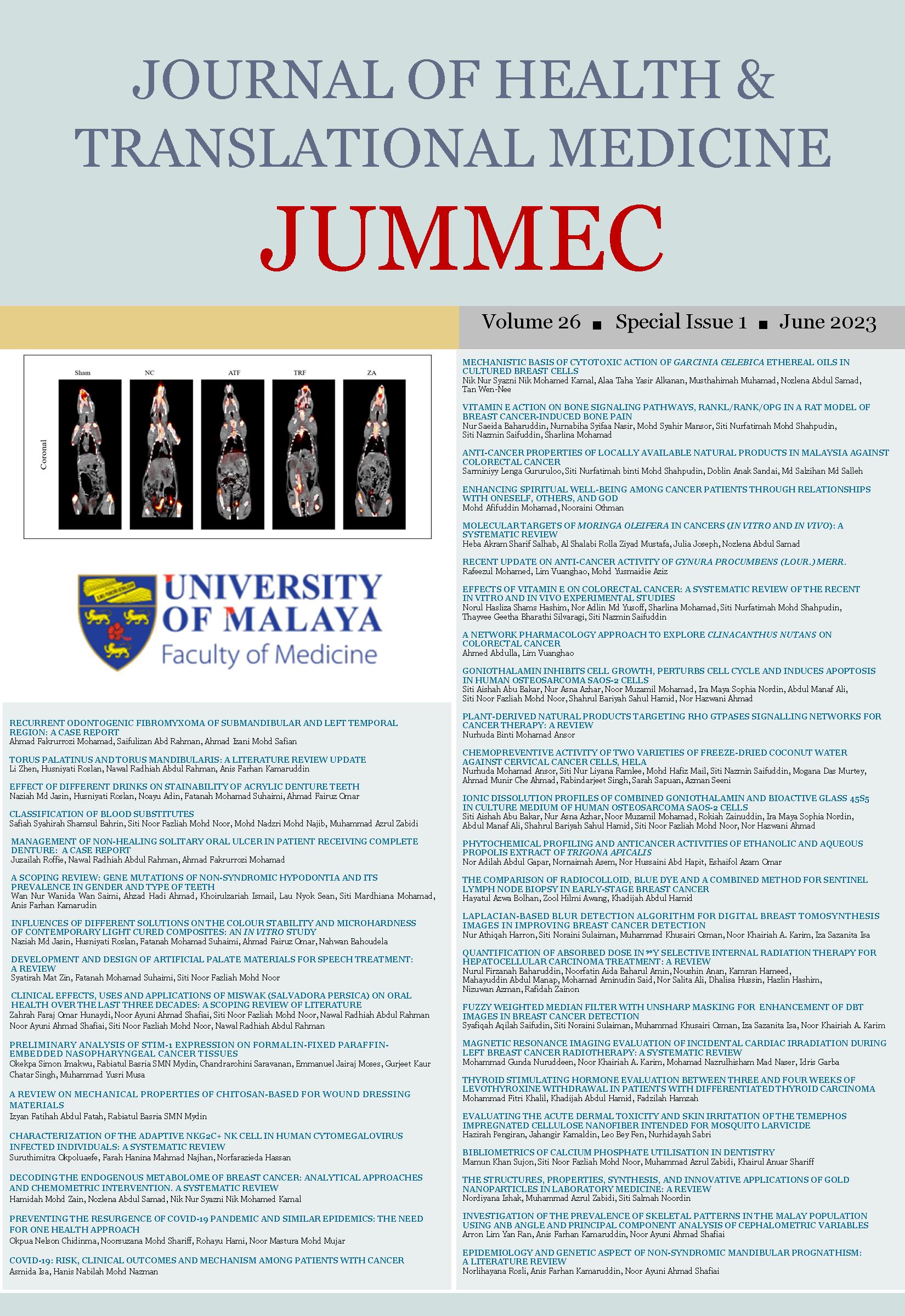THE COMPARISON OF RADIOCOLLOID, BLUE DYE AND A COMBINED METHOD FOR SENTINEL LYMPH NODE BIOPSY IN EARLY-STAGE BREAST CANCER
Received 2023-01-23; Accepted 2023-03-14; Published 2023-06-06
DOI:
https://doi.org/10.22452/jummec.sp2023no1.14Abstract
This study aims to compare the performance of radiocolloid, blue dye and a combined method for sentinel lymph node biopsy in early breast carcinoma. One hundred seventy-two clinically node-negative, early-stage breast cancer patients who underwent combined method sentinel lymph node biopsy (SLNB) with 99mTc-nanocolloid and blue dye were recruited. The peri-areolar injection is the method used in both techniques. The hot node contained only radiocolloid, the blue node contained only blue dye, and the hot-blue node contained both tracers. The detection, metastatic, and failure rate of the combined, radiocolloid, and blue dye methods were determined by analysing the number of hot and blue nodes in all patients, all excised nodes, and metastatic nodes. The association between clinicopathological factors and the detection of sentinel lymph nodes (SLN) was analysed. The overall SLN detection rate was 98.2% (169/172) for radiocolloid, 95.9% (165/172) for blue dye, and 99.4% (171/172) for the combined method. The metastatic rate was 19.2% (33/172). Among the 33 metastatic-node cases, the combined, radiocolloid and blue dye method failed to identify 1, 1 and 4 cases, respectively. Therefore, the failure rate of the combined, radiocolloid, and blue dye method was 3.0% (1/33), 3.0% (1/33) and 12.1% (4/33), respectively. No significant association between clinicopathological factors and SLN detection was observed. The combined method of SLNB yielded the highest detection rate when compared to the radiocolloid-alone and blue-dye-alone methods. The radiocolloid method detected more SLN than the blue dye method. Therefore, incorporating the radiocolloid method in the blue dye method will improve the SLN identification rate and reduce the failure rate of metastatic detection.
Downloads
Downloads
Published
Issue
Section
License
All authors agree that the article, if editorially accepted for publication, shall be licensed under the Creative Commons Attribution License 4.0 to allow others to freely access, copy and use research provided the author is correctly attributed, unless otherwise stated. All articles are available online without charge or other barriers to access. However, anyone wishing to reproduce large quantities of an article (250+) should inform the publisher. Any opinion expressed in the articles are those of the authors and do not reflect that of the University of Malaya, 50603 Kuala Lumpur, Malaysia.


